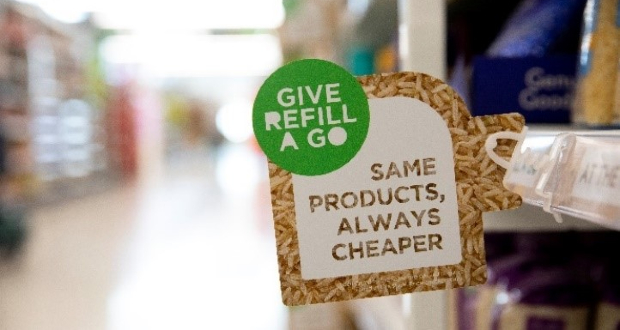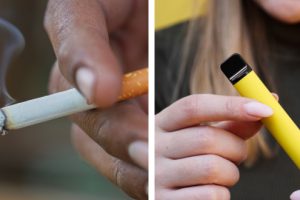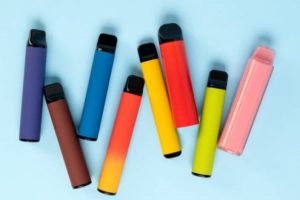As we emerge from the holiday season, this may be a good time to reflect on the role of packaging in the products that we buy and the businesses that we’re part of.
Our new report ‘How to help consumers adopt refill on the go’ gives retailers and suppliers clear insights into consumers’ attitudes towards refill on the go, and is a considerably valuable tool, enabling companies to formulate sustainable packaging strategies that influence longer term behaviour change. It follows a previous phase of consumer research with 2,000 UK shoppers, in which we asked questions about the barriers and opportunities consumers experience when approaching refill and return packaging.
A shared ambition for our food industry
Collectively, the sector is working hard on solutions, such as reuse, to meet a shared ambition – to halve the environmental impacts of all packaging systems by 2030, whilst still enhancing the benefits and quality of products and their packaging today.
Delivering sustainable packaging systems is a critical industry issue for food and consumer goods and sits within wider Net Zero strategies. To accelerate the food and consumer goods industry’s progress, business as usual will not be enough. There will need to be at least a 20% reduction in the amount of packaging on the market to deliver this ambition shared by IGD and the industry. This is where reuse systems can play a part.
Reducing the need for single-use packaging through introducing reusables is a vital part of the solution. But making reuse a reality, at scale, is complex. It’s been so exciting to see retailers and brands trialling new initiatives, but many have not yet scaled and currently consumer uptake is low.
Consumers perceive several barriers
Our research has highlighted opportunities across three key themes:
- cost
- ease
- reassurance
From our previous research, we know that 83% consumers are open to change but they need support to overcome key barriers – this is particularly true of refill on the go. Our latest research reinforces the discovery that perceived cost, effort and concerns around hygiene and quality are still acting as significant barriers for many consumers.
We partnered with Hubbub, Aldi, Asda, and M&S, to develop and test a series of real-life, in-store and online communications solutions to help break-down some of the barriers. Promoting cost-savings was an overarching and successful theme.
Cost is key to motivating consumers to try refill on the go
We found that communicating cost savings is a key window of opportunity, through which to inspire shoppers to try refill on the go. This is especially true at a time when a significant percentage of people are experiencing stress to household budgets and are monitoring how much they spend. We asked consumers that hadn’t yet tried refill on the go about some of the potential incentives/motivators to try it, such as earning rewards and saving money – these were cited as top, motivating factors in nudging shoppers towards refill.
Effective communication plays a vital role in encouraging consumers to try refill on the go
We learned that strong marketing, with messaging centred around cost, helped consumers understand that refill was cheaper than the packaged equivalent products in the stores where trials took place.
When we examined the impact of the different campaign elements, shelf-edge labels at the packaged equivalent delivered the best results with nearly half (46%) of consumers recalling seeing shelf edge labels or other signage around the trial stores. Fewer recalled seeing refill on the go promoted on staff uniforms (13%) or social media (8%).

Shelf edge label promoting refill near the packaged equivalent in ASDA, Milton Keynes
Whilst awareness of more traditional signage, like the example above, was higher among consumers, digital screens with step-by-step guidance boosted consumer confidence; 68% of consumers agreed it helped them better understand how to use refill on the go.
Supported by our wealth of research, below is our top-line, ‘how-to guide’ in which companies within food and consumer goods can strike a chord with shoppers and make refill on the go a success –
How to: marketing refill on the go
- Signpost cost savings of refill on the go.
- Show cost savings of refill on the go compared to the packaged equivalent.
- Consider other incentives to encourage new habits e.g. loyalty points.
- Introduce shelf edge labels and use other key touchpoints to boost awareness.
- Show others using refill on the go and include step by step guidance to boost consumer confidence and help them overcome concerns around ease.
- Consider other touchpoints in and around the store to drive further awareness among your target audience, such as store entrance and colleagues.
- Grab attention quickly with a bold design and a strong call to action
- Use a bold design and simple language to help the refill fixture and any communications around the store grab attention quickly and stand out from other activity.
- Feature simple and consistent messaging with a strong call to action throughout.
- If using digital communications or social media – keep the content short and targeted to those shopping near refill on the go.
To drive greater uptake, refill on the go also needs to feel easy, and consumers need reassurance to overcome concerns around hygiene and quality. This needs to be a priority, alongside any marketing.
Next steps
Our retail partners have now used what we’ve learned from these trials, combined with their own on-the-ground insights, to influence new, more holistic sustainable packaging strategies…and we’ve had fantastic feedback! Aldi UK said:
“Our work with IGD allowed us to focus our marketing on the points that matter to our customers. We have applied these learnings when launching our latest Refill fixture at our Solihull store, ensuring that our customers know that the refill and reuse format is a sustainable and affordable way to shop” – Aldi UK
IGD also works with other industry partners that are focused on operationalising refill-on-the-go, for example with WRAP. In 2024, we are looking forward to seeing how industry comes together around this exciting and vital topic to consider how best to scale reuse systems.
Natasha Maynard is sustainability programme manager at IGD
 Talking Retail Grocery and product news for independent retailers
Talking Retail Grocery and product news for independent retailers






